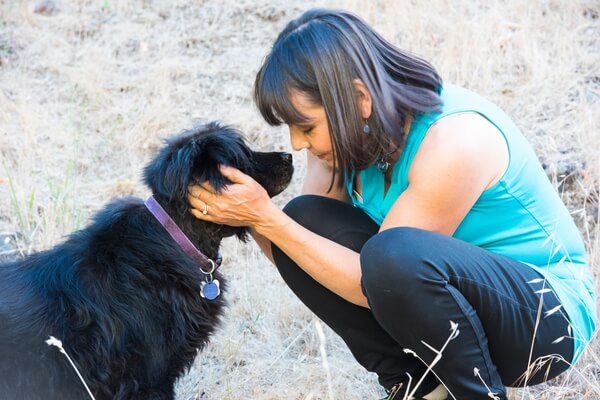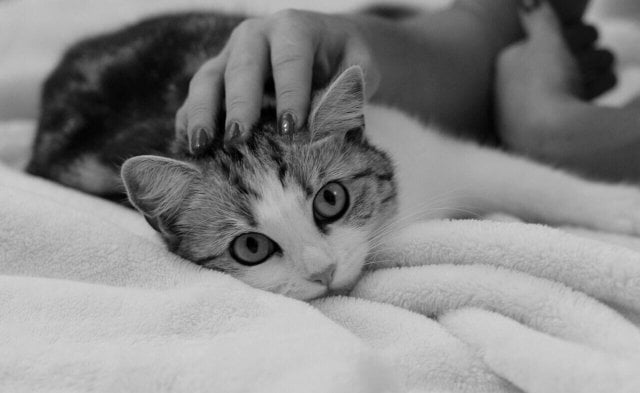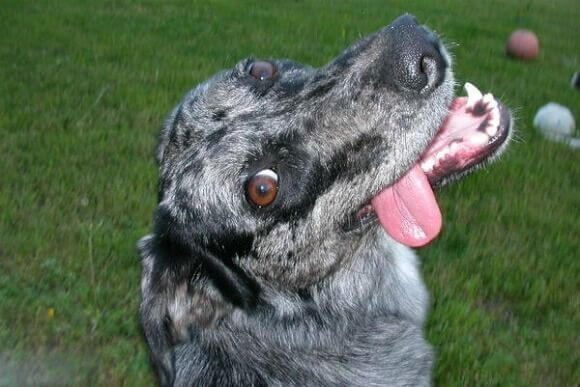Every summer, the depressing reports pour in: dogs dying of heatstroke after being left in hot cars or even just being left outside in hot weather without access to shade or water, as recently happened to two chained pit bulls in North Carolina and South Carolina. So far, at least 37 dogs and counting have reportedly died after being left unattended in parked vehicles this summer.
Why are these dogs dying? Because many dog guardians still don’t realize how easily dogs overheat—and how dangerous it can be when they do. So we asked Dr. Dana Windsor, a veterinarian with PETA’s low-cost mobile spay/neuter clinics, to explain hot-weather hazards—and how to beat them—in order to keep your dog safe.
PETA Prime: I see people out jogging with their dogs in hot weather, and I worry that they think that if they don’t feel overheated, their dogs aren’t overheated, either. But don’t dogs actually have a harder time cooling themselves than humans do?
Dr. Windsor: Dogs are less efficient at cooling themselves, so they overheat more easily and can develop heatstroke in a much shorter period of time compared to a human being under the same conditions. Dogs mainly cool themselves through panting, which expels warm air and promotes evaporation from the mouth. Unlike dogs, humans are able to sweat and thus are able to take advantage of evaporative cooling over most of their body surface. Dog guardians need to check weather conditions before setting out, monitor their dog during the run or walk, reduce the normal duration of the activity, and stop if their dog is showing any signs of distress.
PETA Prime: Are there times when it’s just too hot to take a dog for a walk?
DW: Yes. There are a lot of factors to consider in determining whether conditions are safe for vigorous exercise or even a walk. I would recommend limiting outdoor activities to cooler parts of the day with less direct sunlight: Before 8 a.m. is best, or after 7 p.m.
Always check the temperature of the pavement as well: If you can’t hold your hand to it for 10 seconds, then it’s too hot for dog paws and can actually cause burns. Ambient temperature is certainly important to consider, but so is humidity. High humidity drastically decreases evaporative cooling and therefore limits how much heat can be lost through panting. The heat index takes both of these factors into account.
Risk factors for heatstroke include age (old or young), obesity, cardiac or respiratory conditions, and dehydration. I recommend discussing your dog’s health status and appropriate weather conditions for exercise with your veterinarian.
PETA: I know that boxers, bulldogs, and other flat-faced dogs have trouble with the heat. Are there extra precautions people should take with these types of dogs?
DW: Flat-faced dog breeds such as French and English bulldogs, pugs, boxers, Boston terriers, and Pekingese are definitely more sensitive to heat. They suffer from varying degrees of brachycephalic airway syndrome, which is a complex of anatomical abnormalities of the respiratory tract that limit and obstruct normal airflow and breathing. These dogs will often have to pant in order to obtain enough oxygen, even indoors. In hot conditions, they are unable to move enough air to cool themselves effectively, and this leads to increased respiratory effort and the creation of even more heat. And obesity makes this problem even worse.
Puppies have not fully developed their ability to regulate their body temperature, while older dogs are more likely to have impaired respiratory and cardiac function, making them more susceptible to the heat.
Extra precautions in hot weather are certainly indicated for dogs who fall into one of these categories. They should stay indoors in climate-controlled areas with good ventilation and access to water. Time spent outdoors should be severely limited, and they should have access to shade and be monitored at all times.
PETA: What are some things people can do to help their dogs cope with the heat? Do cooling beds, vests, and bandanas really work? Is it helpful to hose down a dog before going for a walk?
DW: Sure, cooling vests, bandanas, and beds can all help dogs cope with heat and make them more comfortable. Hosing your dog down before a walk can help dissipate some additional heat, just like when a person sweats. These methods can be effective, but people should also recognize their limitations. Drenching a dog when the humidity is 100 percent isn’t going to help very much, and cooling vests and beds don’t always remain effective in very high temperatures. Follow the manufacturer’s instructions, and consult with your veterinarian.
PETA: Should people with long-haired dogs get them shaved or trimmed for the summer? I’ve heard that fur provides insulation, but since the dog’s body temperature is usually higher than the outside temperature, it seems like insulating them might not be desirable. What do you advise?
DW: You are right that fur insulates. And insulation prevents rapid temperature shifts, so while it keeps heat out, it also keeps the heat generated by the dog’s body in. Whether or not shaving your dog is a good idea depends on the type of hair coat and the dog’s lifestyle, and there isn’t a consensus on the issue, but many dogs do seem significantly more comfortable with shorter hair during the summer months. Other factors to keep in mind are that dogs who are shaved too close are susceptible to sunburn and that, for some breeds, the fur may not grow back in.
PETA: What are the symptoms of heatstroke that people should watch out for?
DW: The first signs are usually rapid panting, increased heart rate, drooling, and lethargy. The gums may be darker pink than normal at first but turn pale if the dog progresses to shock. Vomiting, diarrhea, disorientation, fainting, seizures, and loss of consciousness may follow. Please keep in mind that dogs exhibiting these symptoms are in a life-or-death situation.
PETA: What should you do if your dog is suffering from heatstroke?
DW: Act quickly. Dogs suffering from heatstroke should be cooled down with lukewarm water, put in a car with the air-conditioning on high, and immediately taken for veterinary treatment.






